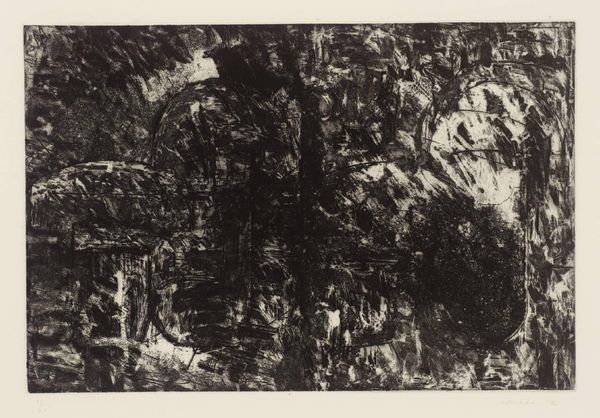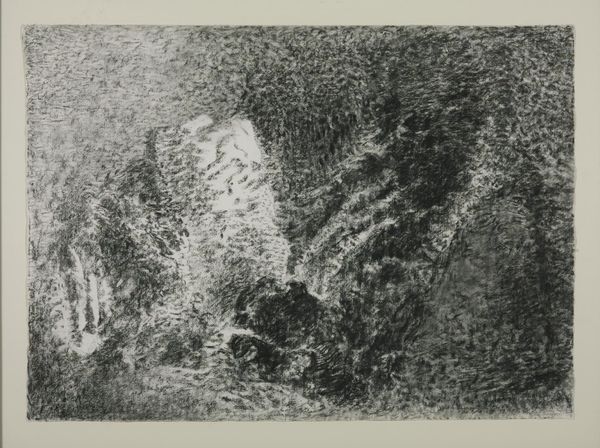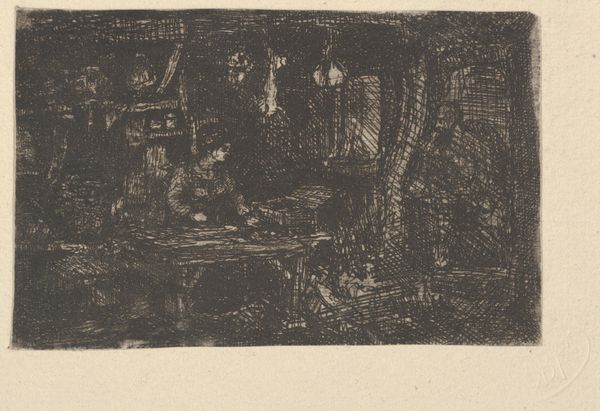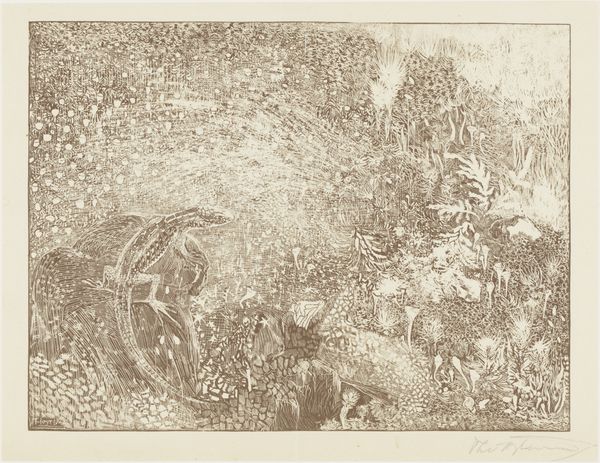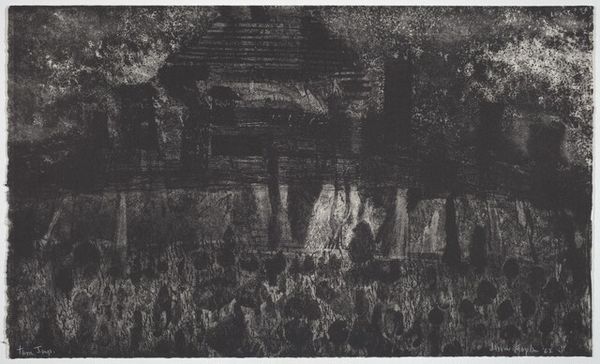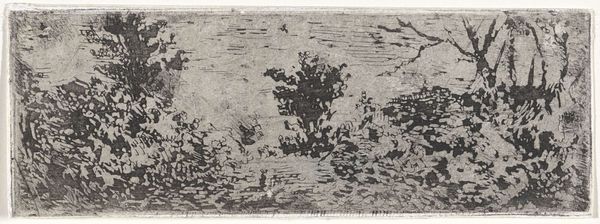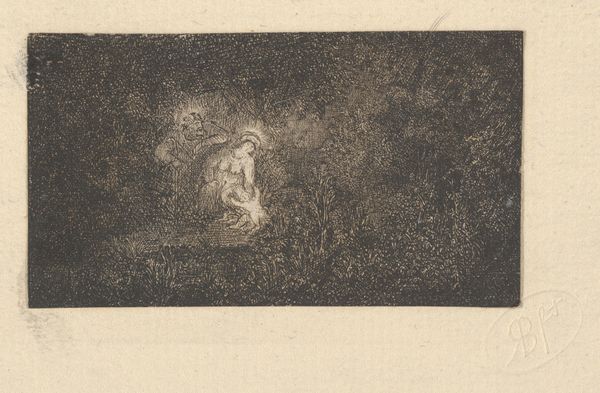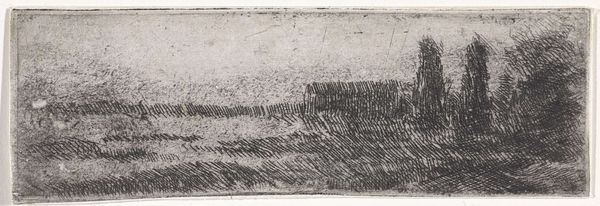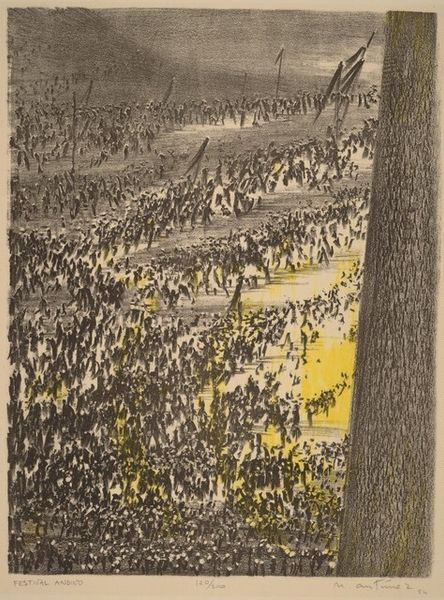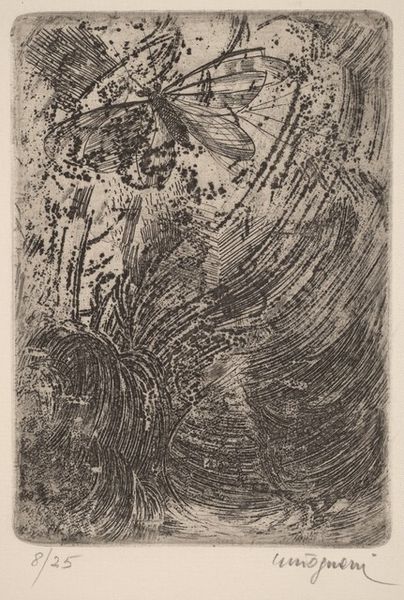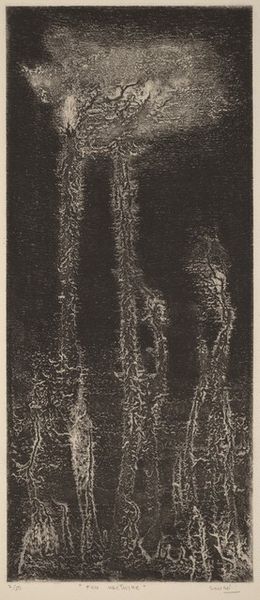
#
organic
# print
#
organic pattern
#
art-informel
#
matter-painting
#
natural texture
#
organic texture
#
watercolor
Copyright: National Gallery of Art: CC0 1.0
Editor: Here we have Jean Dubuffet's "Fantasmes," a print from 1958. I'm immediately drawn to the textural quality. It feels almost like looking at the surface of a distant planet or some primordial soup. What formal elements stand out to you? Curator: The piece operates primarily through its engagement with texture and pattern. The arrangement isn’t about mimetic representation. Dubuffet presents an overall design relying on contrasting values of darker and lighter shapes which provide dynamism to the ostensibly “organic pattern." Consider how the eye moves across the composition, largely devoid of any clear focal point. What kind of a system organizes its visual features? Editor: It's true; my eye is drawn all over the place. So the lack of a focal point, would you say that’s key to interpreting its structure? Is the value system in conflict? Curator: Precisely. We could argue that Dubuffet is enacting a kind of visual democracy. There's a dispersal of importance. Instead of prioritizing a particular element, he gives us an all-over composition of intricately arranged textures. Consider how these distributed visual "events" play against each other and cohere as a work of art, through the semiotic contrast of warm and cool tones, smooth versus sharp boundaries, presence versus absence. Does that help at all in considering its formal components? Editor: Definitely. Seeing it as a visual democracy helps me understand how the textures work together, not to create a specific image, but to form an experience. It's a play between all the formal elements and its parts! Thanks. Curator: A fascinating encounter. This piece really highlights the power of the purely visual!
Comments
No comments
Be the first to comment and join the conversation on the ultimate creative platform.

